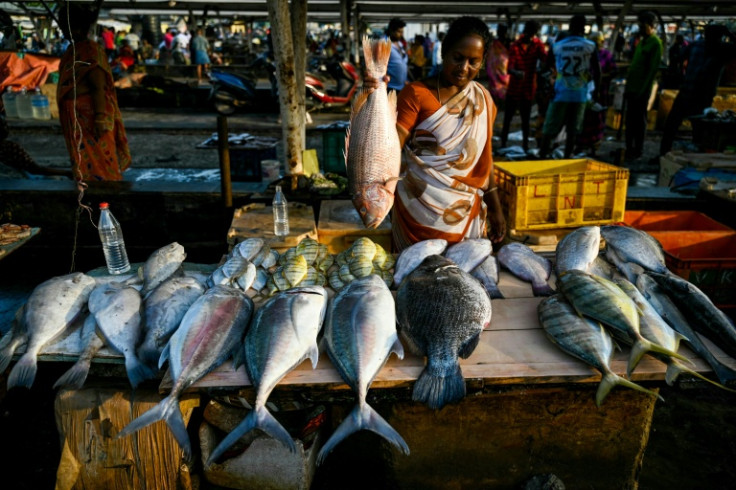
Indian exporters are anxiously eyeing the possible reintroduction of Donald Trump's punishing tariffs next week, though many hold out hope for a last-minute reprieve.
The US president's April 2 "Liberation Day" announcement of swingeing levies on dozens of key trading partners sent shockwaves through capitals before he announced a pause for negotiations, which ends next Wednesday.
New Delhi and Washington have been locked in multiple rounds of talks, with hopes for an interim pact to avert the 26 percent "reciprocal" tolls meted out to India.
The tariffs, which came on top of 10 percent levies across the board for every country, were imposed for what the White House says are unfair US trade deficits.
While India -- the world's most populous country -- is not a manufacturing powerhouse, it still ran up a $45.7 billion trade surplus with the United States last year.
And now some of its most labour-intensive exports, including electronics, gems and jewellery and shrimp, are under threat.
Exporters are "optimistic" that India may be able to carve out a bilateral agreement on the "trade side at least", Ajay Sahai, Director General of the Federation of Indian Export Organisations, told AFP.
But he added that it was "quite a fluid situation", suggesting one outcome could see the deadline extended, given that India is "constructively engaged" with Washington.
"The feedback which I am getting suggests positive developments either way -- and we are hopeful," he added.
India's seafood industry is seeing "some amount of anxiety", but also "more reason for hope", said KN Raghavan, Secretary General, Seafood Exporters Association of India.
He did not give details, but said a "solution appears to be in the anvil".
US officials have been upbeat about the prospect of an agreement.
Trump on Tuesday raised the possibility of an agreement, saying it is "going to be a different kind of a deal".
"It's going to be a deal where we're able to go in and compete," he added. "Right now, India doesn't accept anybody in. I think India is going to do that, and if they do that, we're going to have a deal for much less tariffs."
His Commerce Secretary Howard Lutnick said last month that a pact could be expected in the "not too distant future".
However, Indian media reports on Tuesday, quoting unnamed sources, struck a more neutral tone, saying negotiators were still working to resolve key differences that had cropped up during talks.
An Indian commerce ministry official told AFP that New Delhi's unmet demands included relief from separate sectoral tariffs on steel and aluminium as well a greater access for labour-intensive exports including textiles and footwear.
They have also spoken of disagreements over Washington's push to have India open up its agriculture sector and allow freer trade of American farm produce.
Finance Minister Nirmala Sitharaman has said she was eager for a deal.
"I'd love to have an agreement, a big, good, beautiful one; why not?" she told India's Financial Express newspaper, in an interview printed on Monday.
Sitharaman, however, added that "agriculture and dairy" are the "very big red lines".
Experts believe a smaller agreement is still possible ahead of the deadline.
"The more likely outcome is a limited trade pact," said Ajay Srivastava of Global Trade Research Initiative, a New Delhi-based think-tank in a recent note.
Srivastava said that under such a deal, India could cut tariffs on a range of industrial goods and offer limited access for US agricultural produce --- in return for Trump dropping the 26 percent levies.
But he also warned that talks "may collapse" if Washington "continues to insist on opening India's core agriculture sectors or allowing entry of GMO (genetically modified organism) products".
And seafood exporters remain on edge as talks go down to the wire.
"Currently, exporters believe they can manage with a 10 percent tariff, as it can be absorbed. But if it goes back up to 25 percent to 30 percent levels, we could see American buyers finding alternative sources," Raghavan said.
"They will find some other cheaper source," he added.








